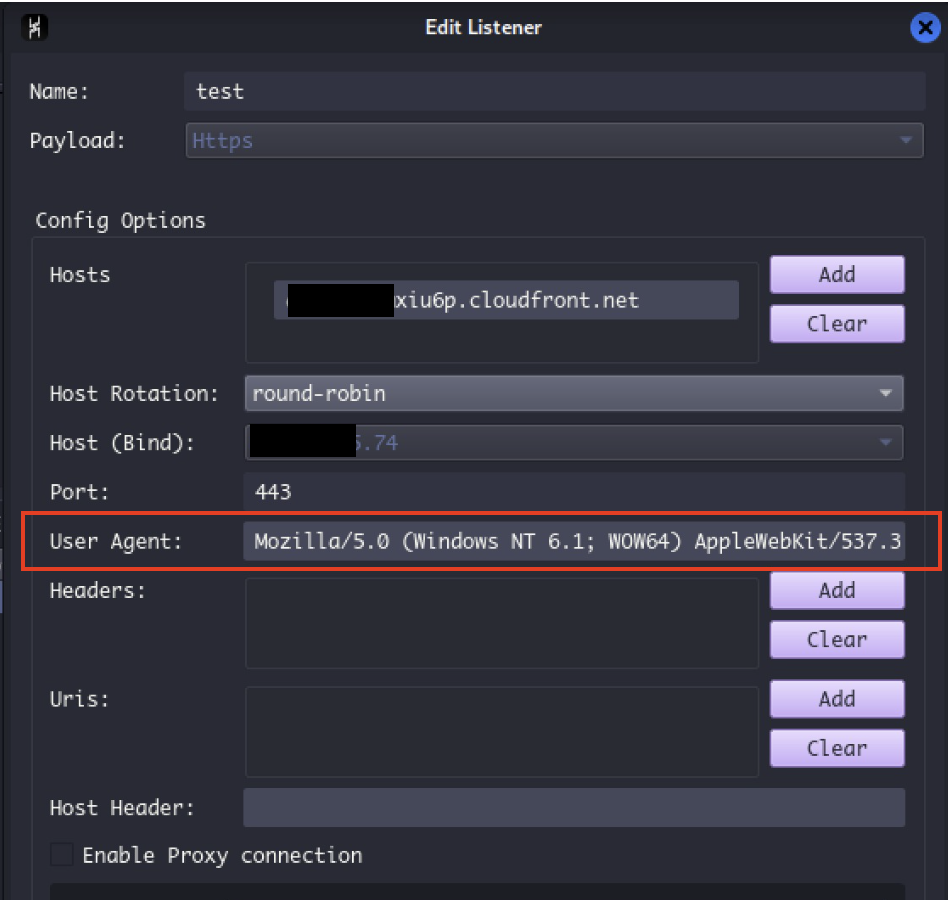Detectar un c2 por las variaciones del user agent. Parte I.
Buscando anomalias
Existen multiples maneras para detectar un c2, algunas mas efectivas o avanzadas que otras.
La idea es buscar una nueva técnica que sea simple sin perder efectividad. Detectar actividades sospechosas que un EDR/AV por sí solo de forma proactiva o por las opciones de hunting que ofrece no podría.
El siguiente caso de uso intenta detectar un comando & control – c2 por las variaciones que ocurren en user agent.
Un c2 intentará simular siempre un user agent legítimo (es decir, no un curl/python/etc) para comunicaciones como http/https. En el mejor de los casos es posible que incluso ajuste hasta la versión de UA a la versión actual del navegador que tenga instalada la víctima.

De este modo, un malware que este usando la siguiente última versión ua: Mozilla/5.0 … Chrome/115.0.0.0, después de algunos días o semana, el navegador del usuario se actualizara automáticamente, cambiando la versión de ese user agent (piensa incluso en cambios de versión menores), la versión UA de el usuario cambiará entonces de algo Mozilla/5.0… Chrome/115.1.0.0 a Mozilla/5.0… Chrome /115.2.0.0 obteniendo en ese caso 3 versiones diferentes de la misma UA en menos de 24h.
Tener 2 versiones diferentes del mismo UA en 24 horas es un comportamiento normal (actualizaciones del navegador), sin embargo, tener 3 versiones diferentes del mismo UA y en menos de 24 horas es un comportamiento anómalo.
La regla de hunting sirve para el SIEM Graylog, sin embargo se puede adaptar fácilmente a cualquier otro.
from grapi.grapi import Grapi
import json
import numpy as np
import os.path
from datetime import datetime, timedelta
import os
import logging
#log error message
logging.basicConfig(filename='error_log.log', level=logging.INFO, format='%(asctime)s - %(levelname)s - %(message)s')
#add ua and device to the dic
def add_values(key_device, splitUA, values_ua, fileName):
listDict = []
listUAalert = []
contSameUA = 0
fileName = "ua_anomaly_"+fileName
listSplitUA = splitUA.split("/")
for v in global_dict[key_device]:
if listSplitUA[0] in v: #If it's true seems a previous UA was saved with a different version. It check if the UA from json is the same as the ua saved previous. The difference in that case is that it compare only the name without the version
contSameUA = contSameUA + 1
listUAalert.append(v)
if contSameUA > 1: #just alert for thoese that match more than two previous UA existing
with open(os.path.join('/opt/adv_ua_anomaly/anomalies',fileName), 'a') as file_alert:
file_alert.write("[**]Alert. Devicehostaname ["+key_device+"] use same UA with different version. UA: ["+splitUA+"] ")
for item in listUAalert:
file_alert.write("[%s] " % item)
file_alert.write("\n")
listDict.append(splitUA)
global_dict[key_device].extend(listDict)
#transform the UA: check if is a [Firefox, Edg, Chrome or Version(Safari)].
def transform_data(key_device, values_ua, fileName):
mylist = []
splitValues_ua = values_ua[-35:] #decrease the value len to optimize the loop
if key_device not in global_dict:
global_dict[key_device] = list()
for splitUA in splitValues_ua.split(' '): #iterate all the values from the UA
splitUA = splitUA[:-3]
if 'Firefox' in splitUA and not any(splitUA in val for val in global_dict[key_device]): #check if the UA is Firefox & check if that UA/version was previous saved in the key
add_values(key_device, splitUA, values_ua, fileName)
break
elif 'Edg' in splitUA and not any(splitUA in val for val in global_dict[key_device]):
add_values(key_device, splitUA, values_ua, fileName)
break
elif 'Chrome' in splitUA and not any(splitUA in val for val in global_dict[key_device]):
add_values(key_device, splitUA, values_ua, fileName)
break
elif 'Version' in splitUA and not any(splitUA in val for val in global_dict[key_device]):
add_values(key_device, splitUA, values_ua, fileName)
break
if __name__== "__main__":
global_dict = {}
#make a loop to solve the problem that elasticsearch only return 10k events.
for timeRange in range(2, -1, -1):
#config parameters
lastD = datetime.today() - timedelta(hours=timeRange)
logging.info('***************************************************************')
logging.info('[**] Telemetry from: ' + lastD)
logging.info('***************************************************************')
for minuteRange in range(0, 60, 2):
prevMin = lastD + timedelta(minutes=minuteRange)
nextMin = lastD + timedelta(minutes=minuteRange) + timedelta(minutes=2)
prevMin = prevMin.strftime("%Y-%m-%d %H:%M:%S")
nextMin = nextMin.strftime("%Y-%m-%d %H:%M:%S")
token = ""
url = "http://127.0.0.1:9000/api/search/universal/absolute"
my_api = Grapi(url, token)
my_params = {#removing some UA from the query like Edge/19 and Edge/18 as they give lots of false positive (windows services use them) or urls that returns
"query": "_exists_:eurl AND _exists_:devicehostname AND _exists_:ua AND ua:*Mozilla* AND !ua:*AcrobatServices* AND !ua:*Edge\/18* AND !ua:*Edge\/19*", # Required
"fields": "eurl", # Required
#"range":3600,
"from": prevMin, #"2022-03-22 20:00:00", # Required
"to": nextMin, #"2022-03-21 8:51:00", # Required
"limit": 10000 # Optional: Default limit is 150 in Graylog
}
#read data from the api
response = my_api.send("get", **my_params)
#convert data to json
json_object = json.dumps(response.json())
json_obj = json.loads(json_object)
if "messages" in json_obj:
lastD2 = datetime.today() - timedelta(hours=24)
fileName = lastD2.strftime("%Y_%m_%d")
for i in json_obj['messages']:
#Example: Device-Name[**]Mozilla/5.0 (Windows..) (KHTML, like Gecko) Chrome/99.0.4844.74 Safari/537.36
transform_data(i['message']['devicehostname'], i['message']['ua'], fileName)
else:
logging.error("[!] Error with json recieaved from graylog.")Tanto está regla como otras están subidas en github.